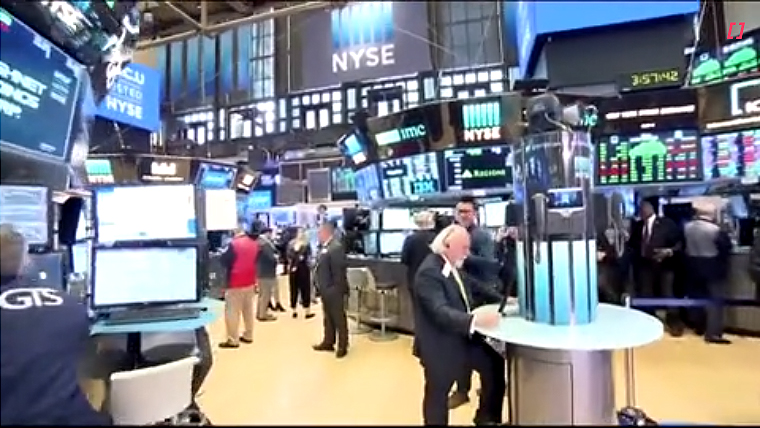
Net market movements have been mostly small, with signs of consolidation across equities, bonds and currencies. European rates are slightly higher after the ECB’s “hawkish cut” and Treasury yields are little changed. The NZD has consolidated around the 0.62 mark and cross movements are negligible. Oil has been the biggest mover, up 2%.
As widely anticipated, the ECB kick started an easing cycle, following in the footsteps of recent rate cuts by Switzerland, Sweden and Canada. The ECB cut its policy rates by 25bps, which takes the deposit rate down to 3.75%. While the Governing Council (GC) noted the progress in bringing down inflation it also noted “domestic price pressures remain strong as wage growth is elevated, and inflation is likely to stay above target well into next year.” Inflation forecasts were revised up by 0.1-0.2% through 2024 and 2025 so inflation now isn’t back to target until 2026. Regarding the policy outlook the GC “will keep policy rates sufficiently restrictive for as long as necessary”, will be data dependent, and it is “not pre-committing to a particular path”.
In the press conference, President Lagarde was non-committal on the timing of the next rate cut. All but one GC member voted for a cut, later confirmed as perennial hawk Holzmann. The market saw the rates decision as a “hawkish cut” and pared some of the easing priced in the curve in the order of 3bps for 2024. As for timing of the next 25bps rate cut, the market ascribes September as more than a 90% chance, with the July meeting likely to be skipped, and some 44bps of easing priced through to the end of the year. On a day of little net movement in the US Treasuries and lower UK rates, Germany’s 2-year and 10-year rates are up 4bps for the day.
In economic news, US initial jobless claims rose 8k last week to 229k. While the data show a mild drift higher in trend, seasonal adjustment issues are widely seen to be partly a factor in the rise. In a separate report by Challenger and Gray, job cut announcements remained flat in May, while hiring announcements were at their lowest level in a decade.
The key employment report is released tonight (see below) and ahead of its release, new figures from the Quarterly Census of Employment and Wages suggest that payrolls grew about 60k less per month on average last year than published. Revisions will be incorporated into the official figures with the usual benchmark adjustment next February. During economic slowdowns, the BLS typically over-estimates the creation of new jobs in the payroll figures, so a downward adjustment shouldn’t be a surprise.
Following a more than 30bps drop in five trading sessions, the US 10-year Treasury yield has consolidated just under 4.3%, showing little net movement on the day. The same goes for the 2-year rate, steady at 4.72%. Equity markets are also in a consolidation mode, and after yesterday’s fresh record closing high, the S&P500 is down slightly.
Currency markets also show little net movement. Knee-jerk strength in EUR to just over 1.09 after the ECB’s announcement proved fleeting and it is back below the figure. All key majors we follow closely have moved less than 0.2% against the USD from the NZD close. In early afternoon trading yesterday, the NZD reached a fresh 3-month high of 0.6215, close to levels reached in February and March, before fading, so that will be marked as a key resistance level. The currency has since consolidated near 0.62. NZD cross movements have been negligible.
With few markets showing any spark, it is worth noting that after their recent tumble, oil prices are up around 2%. While this might simply reflect a bounce-back from oversold levels, the market was supported by comments by the Saudi Energy Minister that OPEC+ retains the option to pause or reverse production changes if necessary, easing market fears that the group would allow the oil market to become over-supplied. Brent crude is trading around USD80 per barrel.
Yesterday, global forces drove down NZ rates, with NZGB yields down 3-4bps across the curve and swaps down 4bps. Market focus was on NZDM’s syndicated tap of 2028 bonds. In the event, $3.5b of these bonds were issued, less than the $4b maximum NZDM was seeking.
In the day ahead in NZ we’ll get more Q1 activity indicators that will help firm up our GDP estimate for the quarter, which currently sits at a 0.1%contraction. China trade data are released but the key focus will be on the US employment report, where the market expects a 185k lift in non-farm payrolls, a steady unemployment rate of 3.9% and average hourly earnings steady at 3.9% y/y.




We welcome your comments below. If you are not already registered, please register to comment.
Remember we welcome robust, respectful and insightful debate. We don't welcome abusive or defamatory comments and will de-register those repeatedly making such comments. Our current comment policy is here.